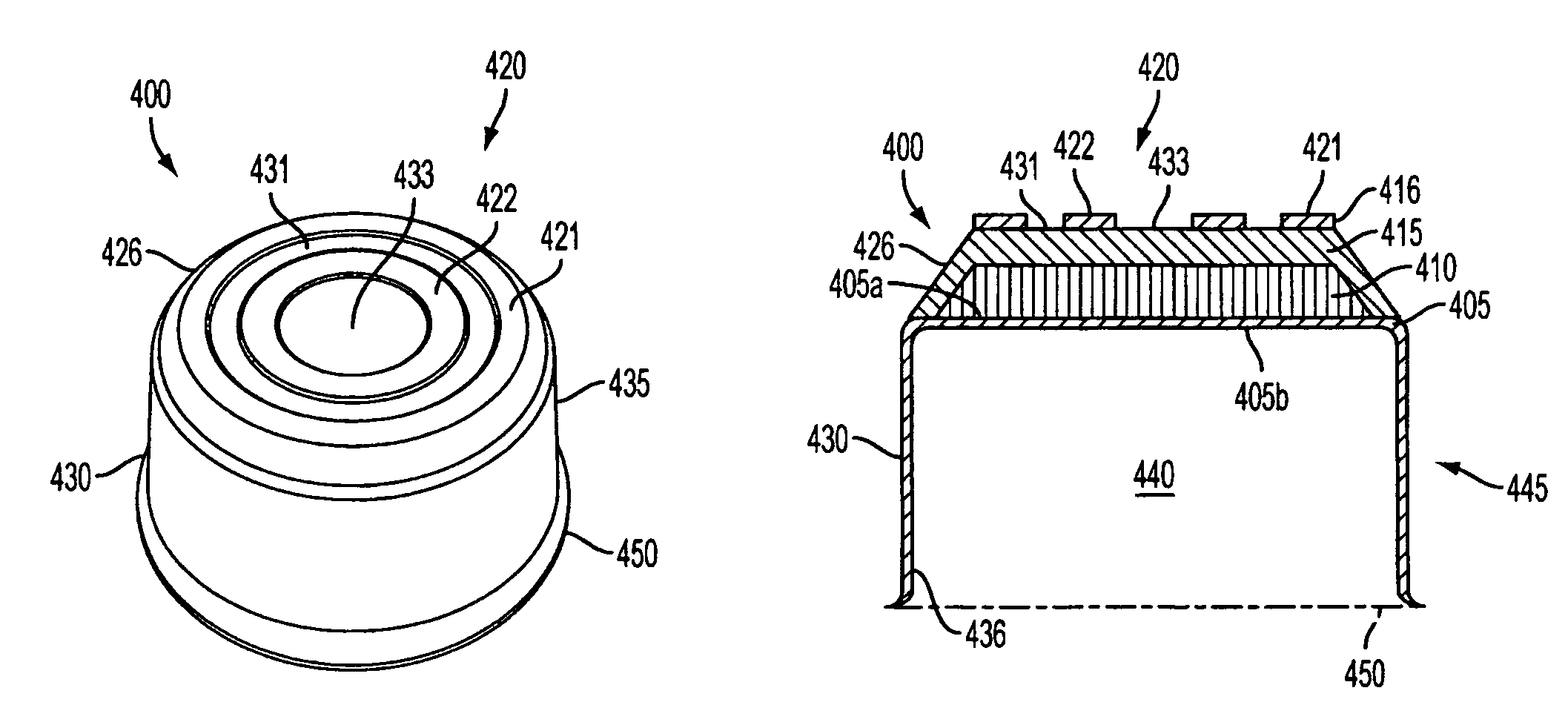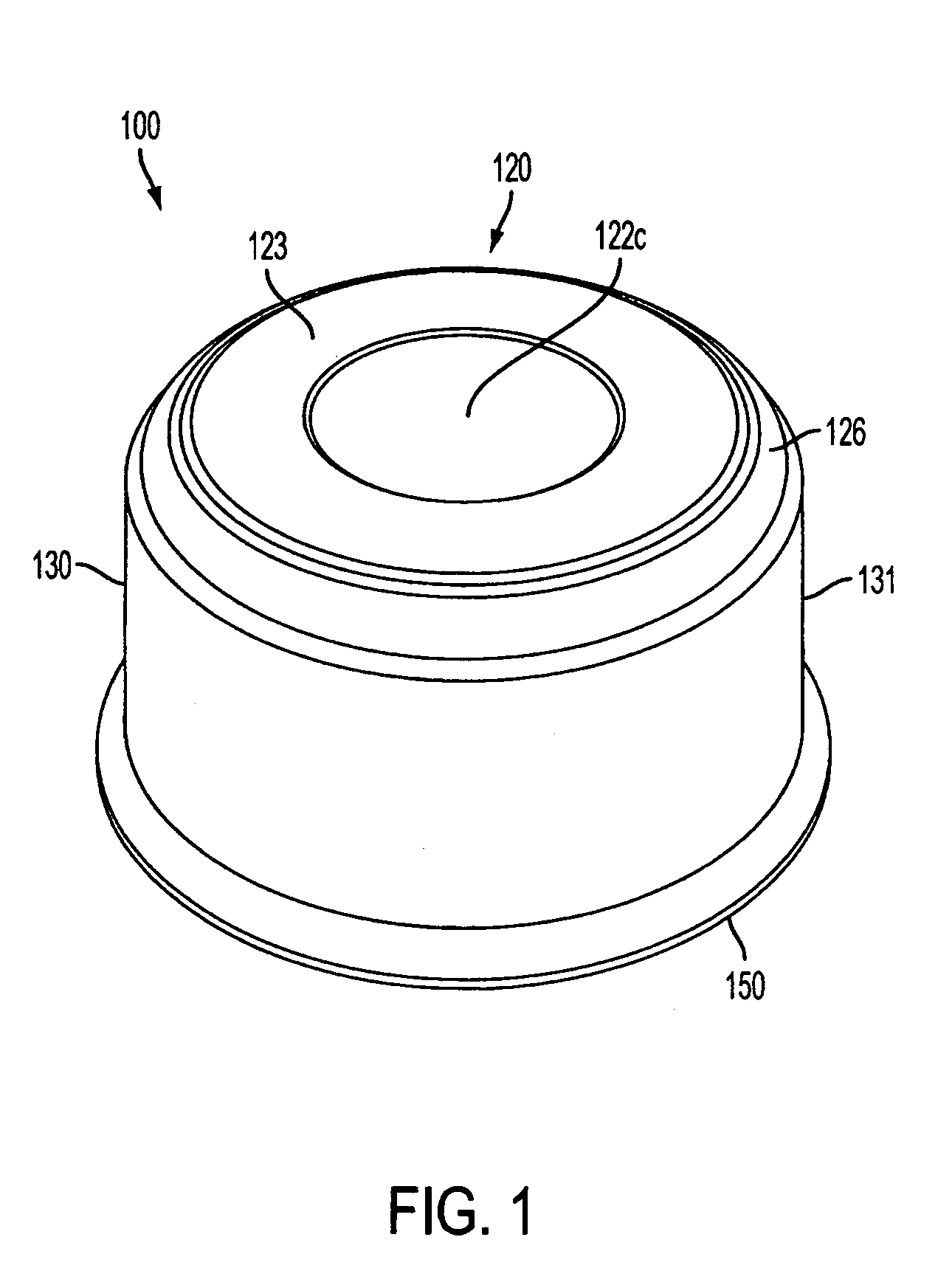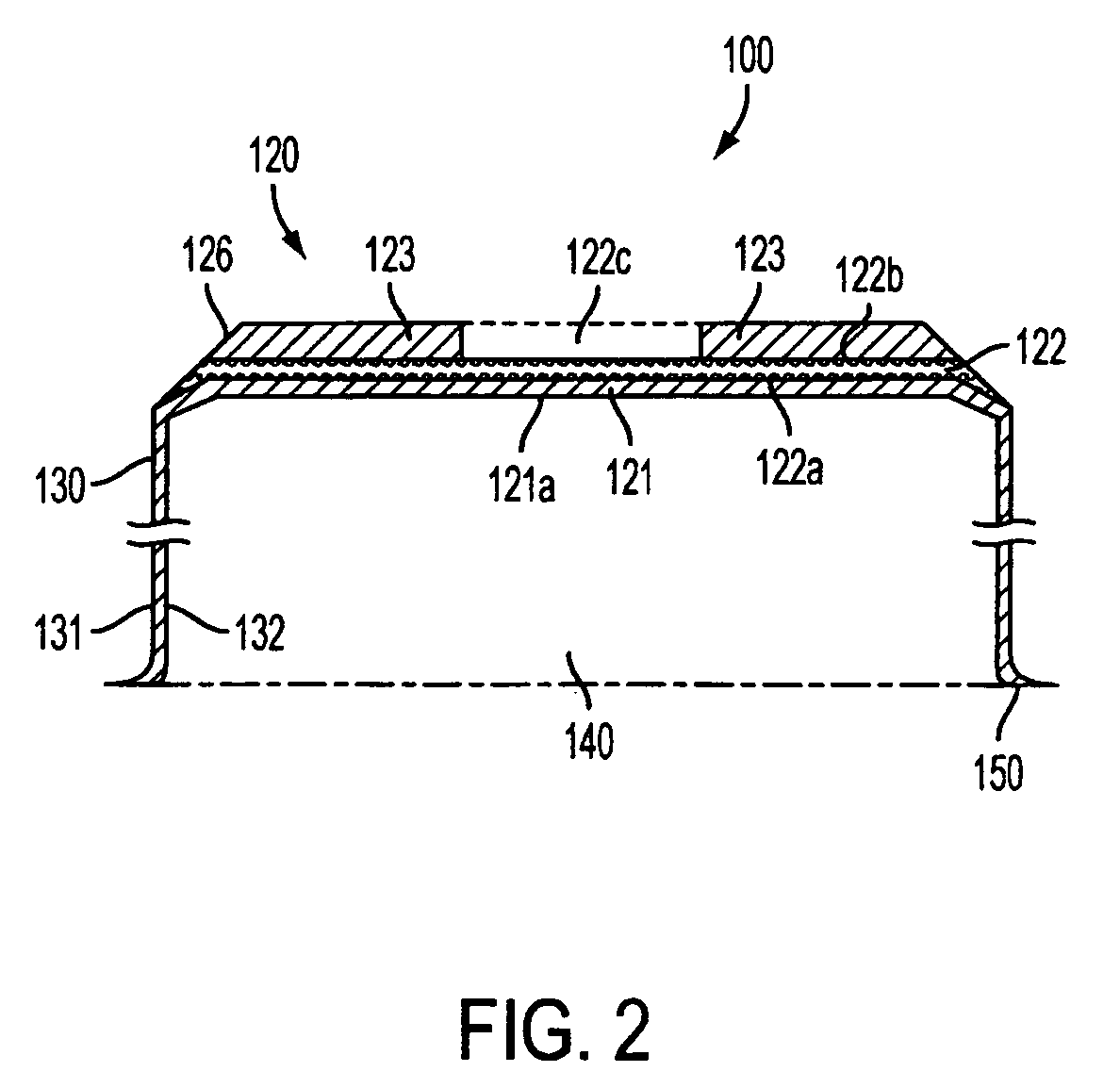Cooking vessel with multiply ringed bottom surface
a cooking vessel and bottom surface technology, applied in baking vessels, heating types, stoves or ranges, etc., can solve the problems of hiding copper and avoiding purchasing such products, and achieve the effect of protecting from abrasion during cooking
- Summary
- Abstract
- Description
- Claims
- Application Information
AI Technical Summary
Benefits of technology
Problems solved by technology
Method used
Image
Examples
first embodiment
[0020]In accordance with the present invention, FIG. 1 depicts an inverted cooking vessel 100 of a first embodiment, in which external bottom surface 120 is upright and surrounded by upright wall 130 that extends therefrom, having outer surface 131. Upright wall 130 extends to outer rim to define the fluid retaining cavity 140. Accordingly, for the purposes of this illustration cooking vessel 100 may be considered to be resting on rim 150.
[0021]FIG. 2 is a cross-sectional illustration showing the laminate construction of cooking vessel 100 in FIG. 1 The bottom 120 of cooking vessel 100 comprises at least three layers of materials, with the upper or outer layer 123, (that is at the bottom of the pan when the FIG. is inverted for normal use) being discontinuous, as it extends above the middle layer 122. Accordingly, when cooking vessel 100 is resting on a burner or stove top in the normal non-inverted position, only the outer layer 123 makes contact with the supporting surface. While ...
second embodiment
[0024]FIG. 4A is a prospective view of the bottom surface of a cooking vessel 400 according to the invention. Cooking vessel 400 has a circular bottom portion 420 surrounded by substantially upright wall 430 connected at the periphery thereof FIG. 4A shows the outside portion 435 of wall 430 whereas FIG. 4B shows the inner portion 436 of wall 430 which define an inner fluid retaining cavity 440. Cavity 440 extends from the inside bottom 421 of the vessel to rim 450, which flairs outward at the unconnected end of wall 430. Wall 430 and bottom 405 that define cavity 440 are integral to a vessel portion 445, whereas the remainder of the bottom 420 of vessel 400 is formed by adjacent layers 410, 415 and 416 with layer 410 being disposed in contact with the outer surface 405a of bottom 406 of vessel portion 445. FIG. 4B also displays the laminar construction of bottom portion 420, starting from inner or cooking surface 405b, layer 410, which is preferably aluminum, or a suitable alloy th...
PUM
 Login to View More
Login to View More Abstract
Description
Claims
Application Information
 Login to View More
Login to View More - R&D
- Intellectual Property
- Life Sciences
- Materials
- Tech Scout
- Unparalleled Data Quality
- Higher Quality Content
- 60% Fewer Hallucinations
Browse by: Latest US Patents, China's latest patents, Technical Efficacy Thesaurus, Application Domain, Technology Topic, Popular Technical Reports.
© 2025 PatSnap. All rights reserved.Legal|Privacy policy|Modern Slavery Act Transparency Statement|Sitemap|About US| Contact US: help@patsnap.com



